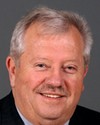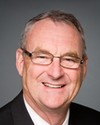I had the honour to give a presentation in front of the security council of the Canadian airports committee, the CAC. We talked about threat assessment. We were looking for an example that was not Pearson or Vancouver or Montreal. We were looking for an example of the threat in a remote airport. I believe we picked Calgary or a smaller airport.
We looked at something that is public information. In Canada or North America, you have this wonderful thing of having aircraft spotters. People sit at the end of the runway and register the tail numbers of the airplanes. They watch and take pictures and so on.
We found out--I think it was in Calgary--that there is a website where people exchange information about how well you can see the wonderful airplanes that are landing when they're using runway so-and-so, and how, if you go to the hotel at the end of the runway and you go to the third floor and open the window, you can see it from 100 metres away. That's wonderful information for spotters.
But if I had bad intentions, I would place on the third floor of this hotel an RPG or another rocket in order to tear down.... That's if I had bad intentions.
The threat assessment is there. The threat is there. How to mitigate it is something that has to be regulated. It cannot come down to whether I have the funds to do it, yes or no, especially when you're talking about an emerging level of threat that is almost uncontrollable. If 10 years ago Mohamed Atta needed probably 15 months to train his people to fly airplanes, nowadays in the Facebook generation it takes maybe days, or hours, or seconds to initiate something that comes up in a revolution in a country, a political revolution.
Saying that the threat in a smaller remote airport is not as big as it is at a bigger airport is maybe a nice statement if you perceive only the smaller airports. But the people who fly from that small airport are coming to the bigger airport and are transit passengers in the bigger airport. Then they have free access to the next flight.





